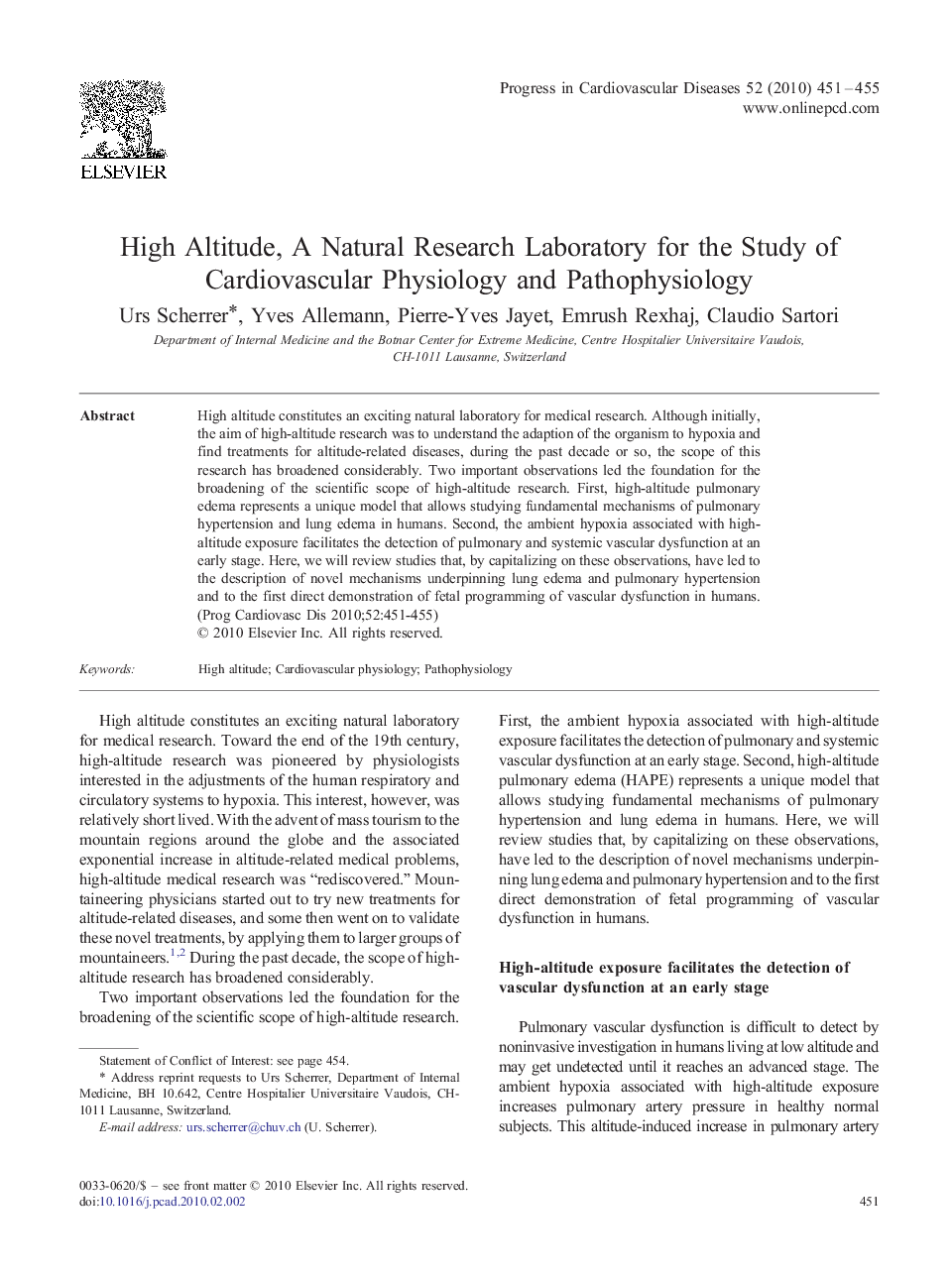| Article ID | Journal | Published Year | Pages | File Type |
|---|---|---|---|---|
| 3006942 | Progress in Cardiovascular Diseases | 2010 | 5 Pages |
High altitude constitutes an exciting natural laboratory for medical research. Although initially, the aim of high-altitude research was to understand the adaption of the organism to hypoxia and find treatments for altitude-related diseases, during the past decade or so, the scope of this research has broadened considerably. Two important observations led the foundation for the broadening of the scientific scope of high-altitude research. First, high-altitude pulmonary edema represents a unique model that allows studying fundamental mechanisms of pulmonary hypertension and lung edema in humans. Second, the ambient hypoxia associated with high-altitude exposure facilitates the detection of pulmonary and systemic vascular dysfunction at an early stage. Here, we will review studies that, by capitalizing on these observations, have led to the description of novel mechanisms underpinning lung edema and pulmonary hypertension and to the first direct demonstration of fetal programming of vascular dysfunction in humans.
